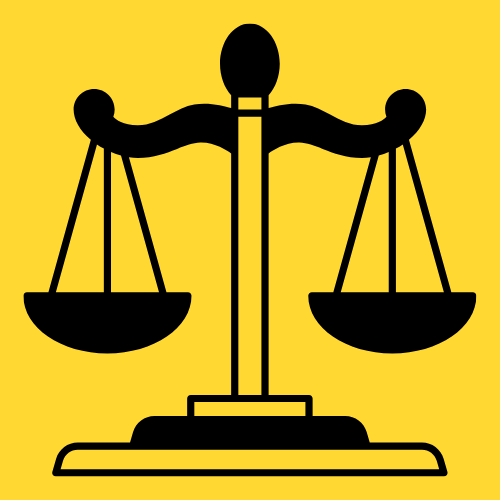WILFRED LUKAGO v REPUBLIC 1994 TLR 189 (CA)
Court Court of Appeal of Tanzania - Mwanza
Judge Kisanga JJA, Omar JJA and Mnzavas JJA
CRIMINAL APPEAL NO. 75 OF 1993 B
1 August, 1994
(From the conviction of the High Court of Tanzania at Tabora, Korosso, J) C
Flynote
Criminal Law - Murder - Contradictions in evidence regarding circumstances in
which deceased was killed - Whether may be relied on for conviction of murder.
-Headnote
The appellant was the husband of one Elizabeth Lukago (PW1). After years of a D
happy marriage blessed with six children, some misunderstandings developed which
led to the appellant's wife having a boyfriend, and the appellant and his wife living
separately. On the material day the appellant went to the house of PW1 where he
met his wife and her boyfriend, but later left. PW1 and her boyfriend also E went
out for a visit, during their return they were offered a lift by a motor vehicle.
Thereafter the evidence was not clear as to what exactly happened but all in all PW1's
boyfriend was subsequently found killed. The appellant was charged and convicted of
murder. The conviction was largely based on the evidence of PW1 which was,
however, contradictory in some respects. F
Held: The prosecution evidence had some serious contradictions and, in the
circumstances of this case, it was impossible to assess the credibility of the appellant's
wife whose evidence was heavily relied on in reaching conviction; all these raise a
grave doubt as to the appellant's guilt. G
Case Information
Appeal allowed.
No cases referred to.
Nasimire, counsel for appellant.
Kaduri, counsel for the respondent. H
[zJDz]Judgment
Kisanga, JA, delivered the considered judgment of the Court:
When this appeal came up for hearing we heard counsel for both sides after which we
allowed it, quashing the conviction for murder and setting aside the sentence with an
order for the appellant's I
1994 TLR p190
KISANGA JA
A immediate release. We reserved our reasons for judgment, which we now proceed
to give.
The appellant is the husband of one Elizabeth Lukago (PW1). For quite some time the
two lived happily as husband and wife, and they had six children between them.
However, close to the happening of these events they fell into family
misunderstandings which caused PW1 to develop the relationship of boyfriend B
with the deceased. At the material time PW1 and the appellant, although husband
and wife, were living separately.
In the morning of the material day the appellant had gone to the house where PW1
C lived and found PW1 and the deceased, her boyfriend there. He went away after
some time but made no comment about his finding the deceased there. After some
time PW1 and the deceased went out together. The deceased had asked PW1 to escort
him to visit the family of one Mwakibete, and from there they visited D Tabora
Boys' and Girls' Secondary Schools. After leaving the schools at about 3.00 pm, and as
they were walking along, a motor vehicle came from the opposite direction and on
reaching them the occupants thereof offered them a lift.
Thereafter the evidence is so unsatisfactory that Mr Nasimire, learned advocate E for
the appellant, submitted in effect that no court properly directing itself could have
grounded the appellant's conviction on it. Mr Kaduri, learned Senior State Attorney
appearing for the respondent Republic, concurred and did not wish to support the
conviction.
F The rest of the prosecution case depended entirely on the evidence of PW1. She
stated that upon the occupants of the motor vehicle offering them a lift, the deceased
accepted provided that the motor vehicle went in their direction. Whereupon the
driver reversed and headed in their direction. One of the G passengers of the motor
vehicle was the appellant and another one was Mrs Mwakibete to whose house PW1
and the deceased had been that morning only to find her out at work. PW1 did not
know Mrs Mwakibete before, but she was identified to her by Mrs Mwakibete's son
(PW2) who had joined PW1 and the H deceased as they were walking along, and
the three were together when they met the motor vehicle. PW1 and the deceased got
into the motor vehicle leaving Mwakibete's son on the ground. Then as the motor
vehicle drove off fast, PW1 and the deceased were blindfolded by some of the
passengers in the motor vehicle, using cloth material for the purpose. At some point
further on the motor vehicle stopped. PW1 and the deceased were forced out of the
motor vehicle after which they I
1994 TLR p191
KISANGA JA
were attacked in the most brutal manner. PW1 lost consciousness for over two A
months as a result of the severe attacks. The dead body of the deceased was found
lying on the ground under a tree. It had marks of violence on the head, and in the
doctor's opinion death was due to head injury and intracranial haemorrhage. In his
defence, the appellant flatly denied the charge of murder. B
The prosecution evidence was unsatisfactory in a number of ways. First, it involved
serious contradictions. PW1 is contradicted when she said that Mrs Mwakibete was in
the motor vehicle which kidnapped her and the deceased, and that it is Mrs
Mwakibete's son who identified his mother to her (PW1). For, C Mwakibete's son
(PW2) denied being in the company of PW1 and the deceased at the time of meeting
the alleged motor vehicle. Mrs Mwakibete who gave evidence for the defence (DW2)
equally denied being a passenger in the said motor vehicle or otherwise being at the
scene as claimed by PW1. The trial judge in convicting the appellant, relied heavily
on the evidence of PW1 whom he found to be a truthful witness. However he did not
attempt to resolve these contradictions in the D evidence. He did not say why Mrs
Mwakibete and her son should deliberately testify unfavourably against the deceased
who was shown to have had some friendly connections with the Mwakibete family,
as against the appellant who was a total stranger to that family. E
Secondly, PW1 admitted making two statements to the police about the incident. She
further admitted that those statements might be different because of the brain injury
that she sustained which, as already noted, rendered her unconscious for over two
months. Now, a number of questions arise from this. First, which of the F two
statements was the basis of her evidence in court, or was that evidence based on both
statements? The learned judge never addressed himself to that question and on the
evidence we can find no clue as to what the answer is. In those circumstances it
becomes impossible to assess her credibility, that is, to G determine the extent to
which her evidence was or was not affected by the severe brain injuries which she
sustained.
And lastly, in convicting the appellant the court also relied on the evidence that H
some time during the investigation of the case an axe was recovered from the
appellant's house which had marks of human blood on its blade and the wooden
handle. While such evidence served to augment suspicion on the appellant, it did not
advance the prosecution case any much further. For, it was not shown whose blood it
was. It could be that of the person or persons who occupied the house and who used
the axe. I
1994 TLR p192
A In our view, all these points taken together raise a grave doubt as to the
appellant's guilt, and had the learned trial judge addressed his mind to them he would
not have convicted the appellant. It is for these reasons that we allowed the appeal,
quashed the conviction and set aside the sentence and ordered the appellant's
immediate release from prison unless he was otherwise lawfully held. B
1994 TLR p192
C


%20(10).png)



%20(28).png)

0 Comments
PLACE YOUR COMMENT HERE
WARNING: DO NOT USE ABUSIVE LANGUAGE BECAUSE IT IS AGAINST THE LAW.
THE COMMENTS OF OUR READERS IS NOT OUR RESPONSIBILITY.